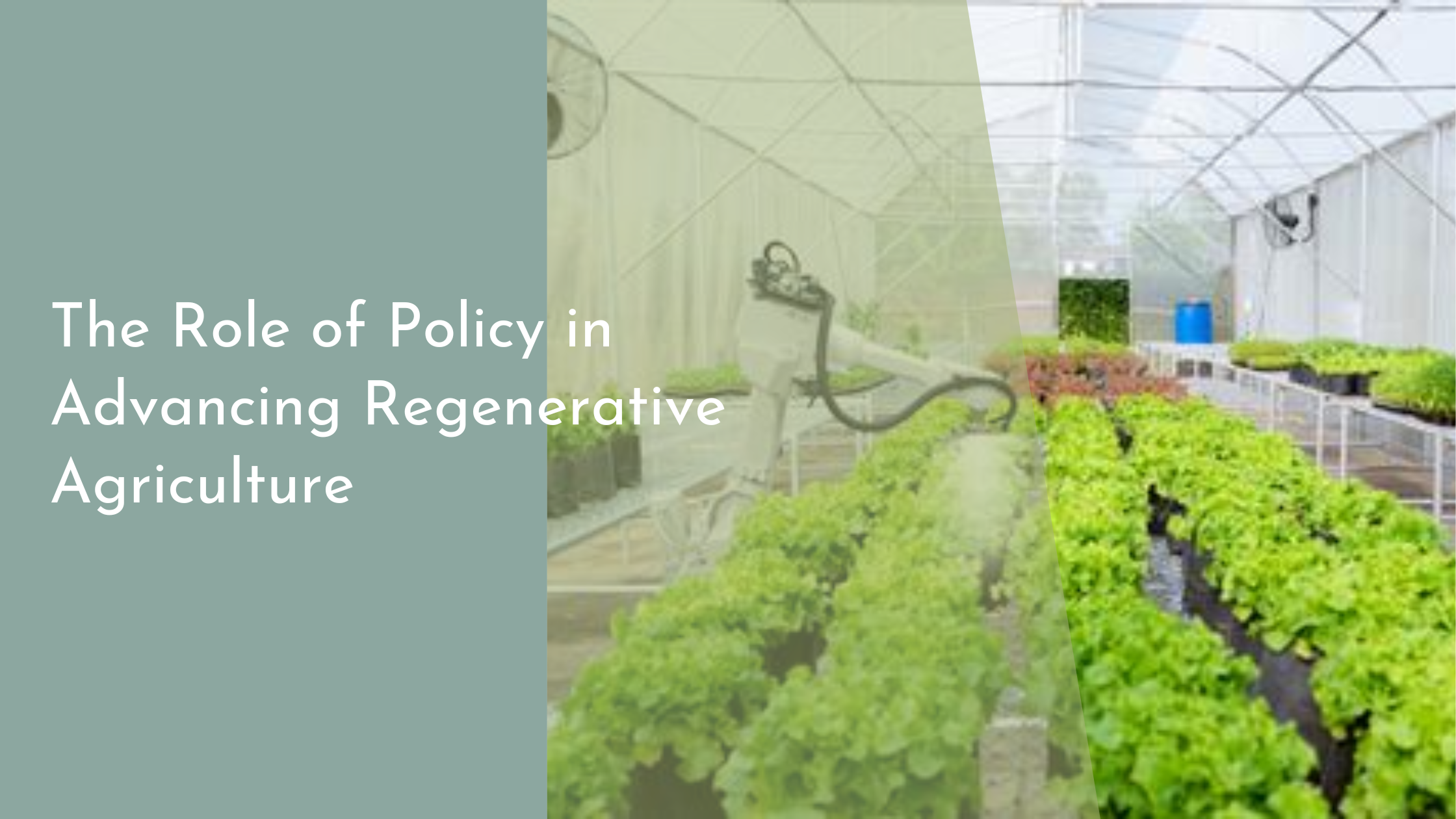The Role of Policy in Advancing Regenerative Agriculture
Regenerative agriculture has emerged as a promising approach to sustainable farming, characterized by its focus on improving soil health, biodiversity, and ecosystem resilience. As the world grapples with climate change and food security challenges, the role of policy in advancing regenerative agriculture becomes increasingly crucial. By shaping the framework within which farmers operate, policies can either hinder or facilitate the transition to more sustainable agricultural practices. This article explores the principles of regenerative agriculture, examines current policies affecting these practices, identifies key policy changes needed to promote regenerative farming, and envisions a future where policy-driven innovation transforms agriculture.
Understanding Regenerative Agriculture Principles
Regenerative agriculture is built on a foundation of principles designed to restore and enhance the agricultural ecosystem. At its core, this approach seeks to improve soil health through practices like crop rotation, cover cropping, reduced tillage, and the incorporation of organic matter. These techniques increase soil fertility and structure, allowing it to retain more water and nutrients while reducing erosion. By focusing on soil health, regenerative agriculture not only increases productivity and resilience but also plays a vital role in sequestering carbon and mitigating climate change.
Another key principle of regenerative agriculture is the promotion of biodiversity. This is achieved by integrating diverse plant and animal species into farming systems, which enhances ecosystem services such as pollination and pest control. These practices also support wildlife habitats and improve the resilience of farms to pests, diseases, and weather extremes. By fostering a diverse and balanced ecosystem, regenerative agriculture creates a more stable and sustainable agricultural environment, ensuring long-term productivity and food security.
Current Policies Impacting Agricultural Practices
Current agricultural policies vary widely across regions, often reflecting a mix of traditional and modern agricultural philosophies. However, many existing policies still favor conventional practices, focusing on maximizing yields through the use of chemical fertilizers and pesticides. Subsidies and incentives often support monoculture farming and intensive livestock operations, which can deplete soil health and reduce biodiversity. These policies can inadvertently create barriers to adopting regenerative practices by prioritizing short-term productivity over long-term sustainability.
In contrast, some regions have begun to implement policies that support more sustainable practices. Programs offering financial incentives for soil conservation, organic farming, and carbon sequestration are gaining traction. Additionally, certain policies encourage research and development in sustainable agricultural technologies and provide educational resources to farmers interested in transitioning to regenerative methods. Despite these positive developments, a comprehensive policy framework that fully embraces regenerative agriculture principles remains lacking in many parts of the world.
Key Policy Changes to Promote Regenerative Farming
To truly advance regenerative agriculture, policy changes must focus on incentivizing practices that improve soil health and promote biodiversity. One effective approach would be to restructure subsidies and financial incentives, rewarding farmers who adopt regenerative techniques such as cover cropping, agroforestry, and no-till farming. Additionally, implementing tax breaks or grants for farms that achieve measurable improvements in soil carbon sequestration would encourage broader adoption of these practices.
Education and training are also critical components of policy changes to support regenerative agriculture. Governments could establish programs to disseminate knowledge about regenerative practices, facilitating peer-to-peer learning and providing technical assistance. Policies that support research into regenerative agriculture innovations and make these findings accessible to farmers can drive further adoption and adaptation. By aligning financial incentives and educational resources, policymakers can create an environment conducive to the widespread implementation of regenerative farming.
The Future of Policy-Driven Agricultural Innovation
As the world increasingly acknowledges the limitations of conventional agriculture, the future holds exciting possibilities for policy-driven innovation in farming. By embedding regenerative agriculture principles into national and international policies, governments can spur innovation across the agricultural sector. This may involve investing in research and technology to optimize regenerative practices, developing new crop varieties suited to diverse farming systems, and exploring digital tools for monitoring soil health and ecosystem services.
Policymakers also have the opportunity to foster collaboration between farmers, researchers, and industry leaders to collectively address the challenges of transitioning to regenerative agriculture. Creating platforms for dialogue and partnerships can lead to novel solutions and technologies that enhance resilience and sustainability. By taking a proactive approach, policies can transform agriculture into a regenerative force that ensures food security, enhances biodiversity, and combats climate change.
In conclusion, the role of policy in advancing regenerative agriculture is pivotal in creating a sustainable future for farming. By understanding the principles of regenerative agriculture and recognizing the current policy landscape, stakeholders can advocate for changes that align with regenerative goals. With key policy changes that support soil health, biodiversity, and farmer education, we can pave the way for a future where agricultural innovation thrives. As policymakers embrace the potential of regenerative practices, we move closer to a world where agriculture contributes positively to the environment and society.

